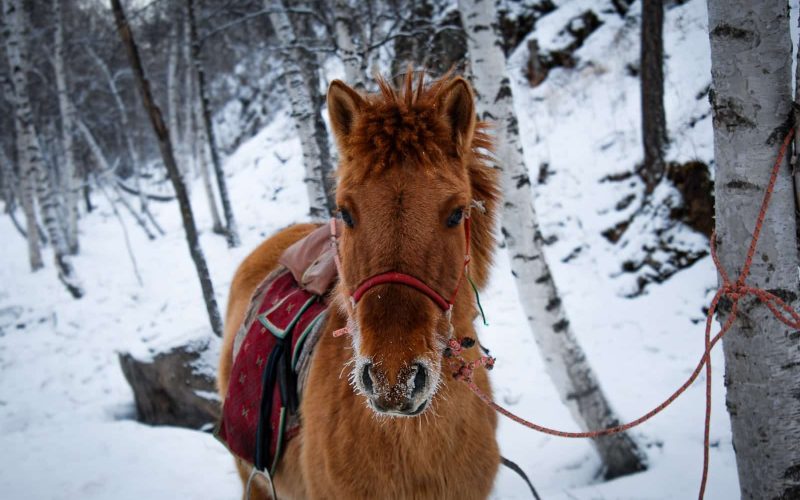Riders must have a saddle to do their duties. The rider can keep a stable and comfortable position on their horse because of the support and security it gives.
Different types of saddles are available for various equestrian activities.
The first saddles were held together only by surcingles and a pad.
Around 200 BC, the classic saddle tree was invented in Asia. The horse and rider benefited from this innovation since it helped distribute the weight more equally over the horse’s back.
The Samaritans are credited with inventing the leather saddle and stirrups during the 3rd century AD.
Saddles have evolved, and now, many options suit various riding styles.
Both horse and rider must be properly fitted when purchasing a saddle.
An incorrectly-fitting saddle can lead to poor performance and behavioral problems in the horse.
Sitting in balance is impossible if it doesn’t suit the rider appropriately.
Below are the different types of saddles.
1. Dressage Saddle

There are two types of dressage saddles: one for flatwork and the other for jumping.
Because of the deep seat and long, straight saddle flaps, the rider may sit comfortably in the saddle and use the proper aids when conducting test movements.
Straight flaps allow the horse more shoulder movement flexibility, allowing it to do more extravagant movements.
Riders should be able to put their leg under their seat with the stirrup bars far enough back.
This is one of the different saddles with a taller cantle than a pommel to accommodate the rider’s extensive use of the sitting trot.
Both practical and attractive, these saddles are designed to be used with a white dressage saddle pad.
2. Side Saddle
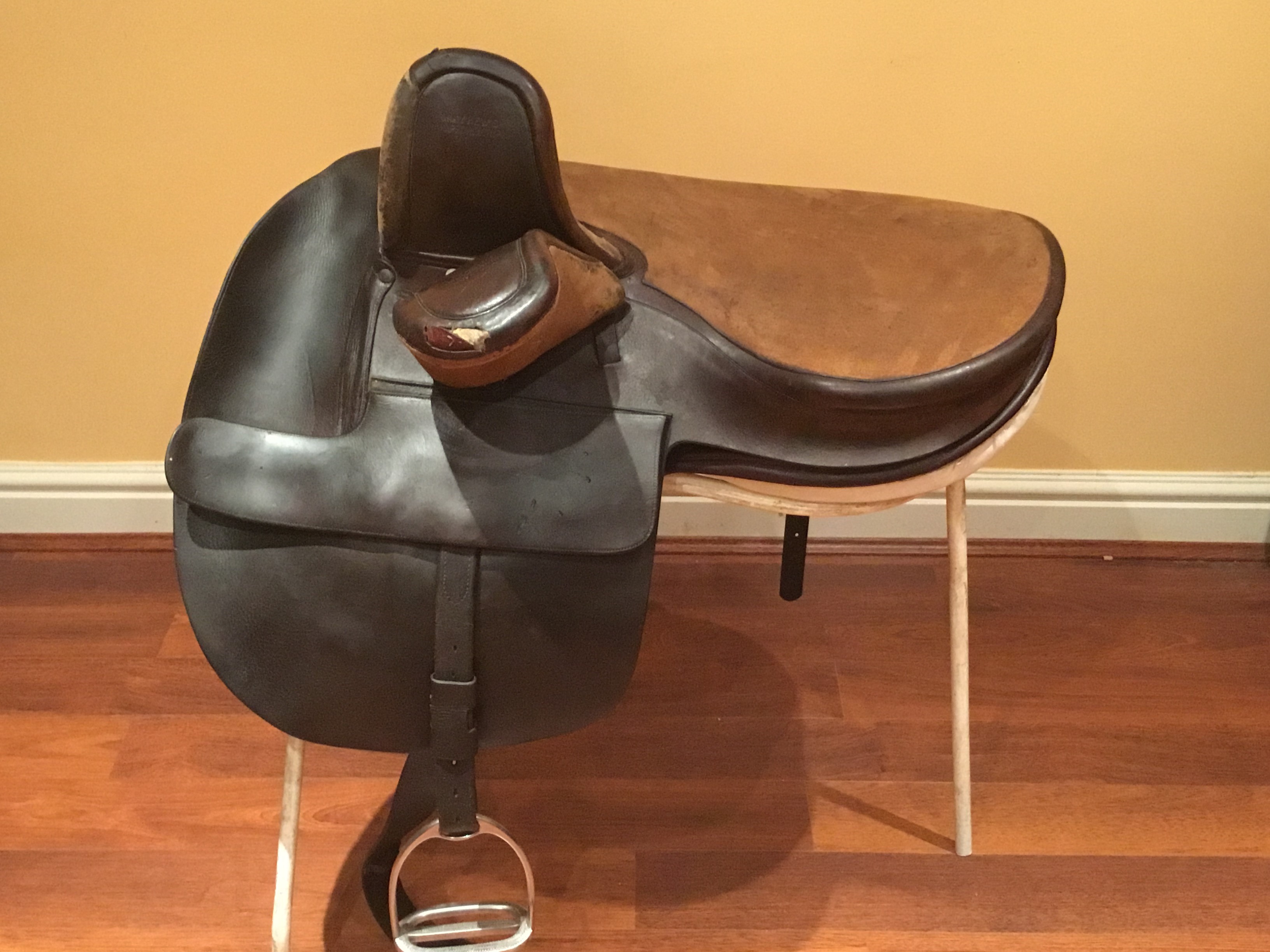
The two-pommel design allowed women to ride side saddles with both legs on one side of the horse.
With one stirrup, the right leg is put over the upper pommel, and the left is on the lower.
Many people assume that the rider sits sideways in the saddle. However, this is not the case.
The side saddle provides a level of security that permits galloping and leaping.
Show classes for side-saddle riders are abundant nowadays. This is one of the different types of saddles suitable for women.
3. Barrel Saddle
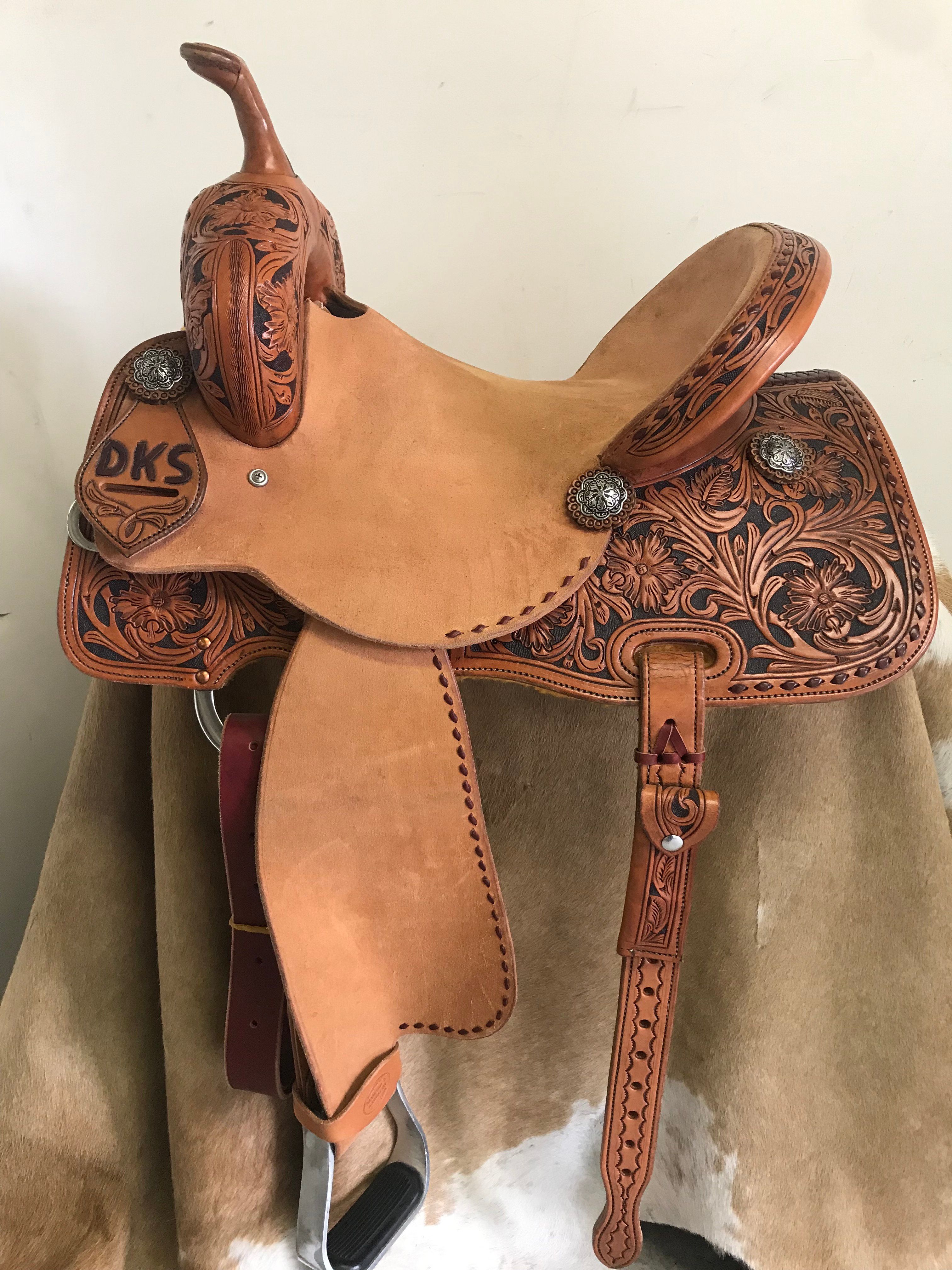
Saddles for barrel racing are called barrel saddles. Their seats are deep enough to keep the rider firmly in place through the sharp, fast turns.
In addition, they have a large horn for a comfortable grip and a higher pommel to keep the rider safe.
Additionally, the cantle on a barrel saddle is taller, providing greater stability when navigating a curve.
Barrel saddles are designed to be lighter and more compact, so they don’t add too much weight.
The concept here is that the lighter you are, the faster you can move. As a result, the skirts tend to be shorter and rounder in shape.
In addition, they usually have rigging built into the skirt. A barrel saddle’s primary function is to reduce its weight while providing adequate support for the rider.
You can trail ride using barrel saddles but not rope out of them. It will break if you try to rope or drag the horn out of it.
4. Show Saddle
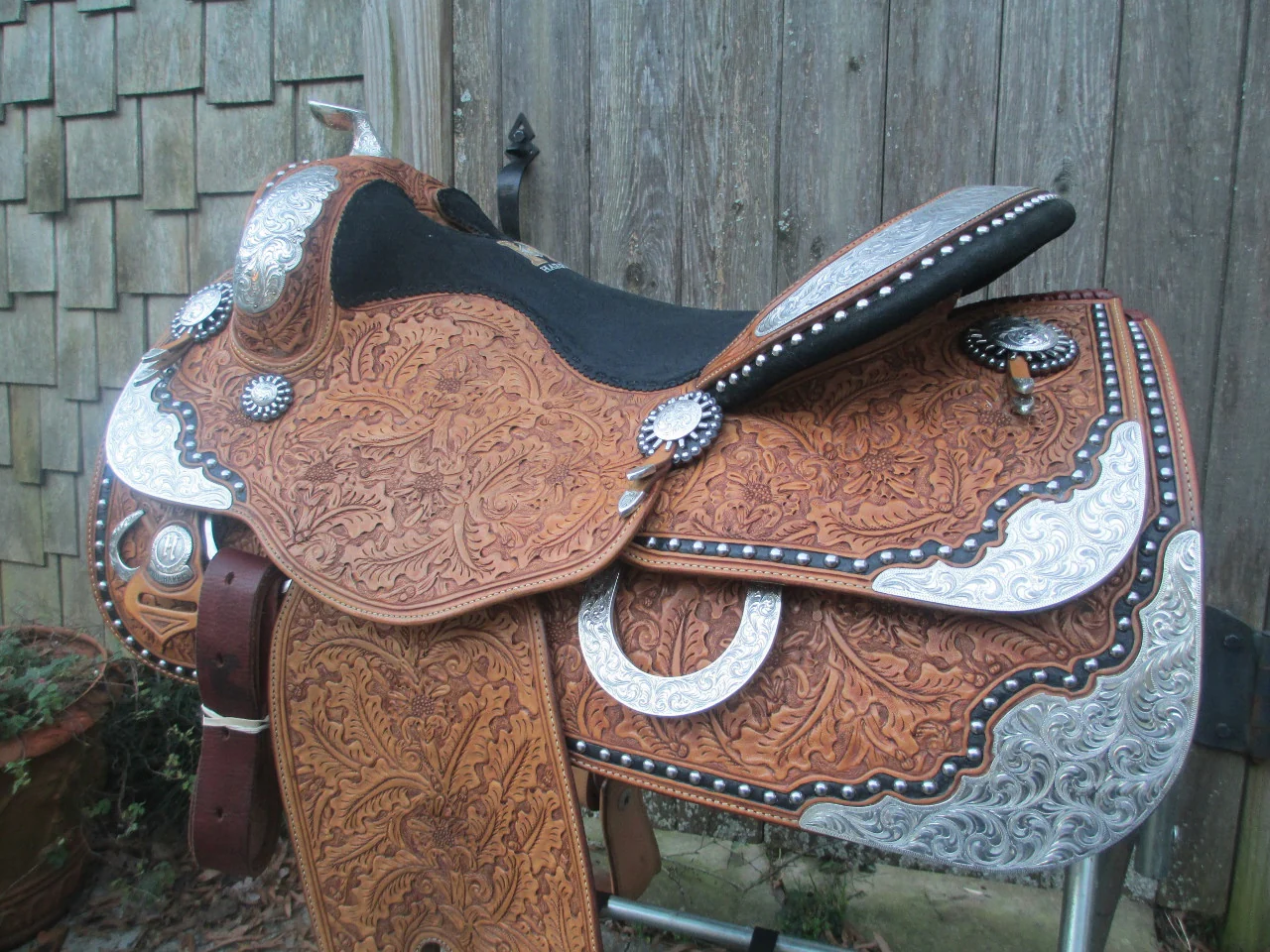
Seats on show saddles are equitation-style. They use complex tooling, a lot of silver, and tight contact skirts to improve leg cues.
These are among the different saddles designed to be appealing and attention-grabbing.
They have short and thick horns. It’s also common for them to wear long and double skirts.
The goal is to be appealing and provide a comfortable seat. Riders strive to be in the best possible position while riding.
This is made possible because of the seats’ built-in pockets. Since they have a lower pommel and horn, they are easier to cue and rein in.
The leather on these saddles is thick and heavy. All of the features add up to a higher price. A show saddle won’t let you get out with a rope.
5. Jumping Saddle

Balance and security may be improved by using a jumping saddle with a unique design.
Saddle flaps are large and front cut, allowing the rider to bend his knee and use a shorter stirrup than on a dressage saddle.
Padded knee rolls are common on jumping saddles, which make it easier for riders to retain a secure lower leg and half-seat position when riding.
So as not to obstruct the leaping posture, the cantle and pommel are lowered.
6. Western Saddle
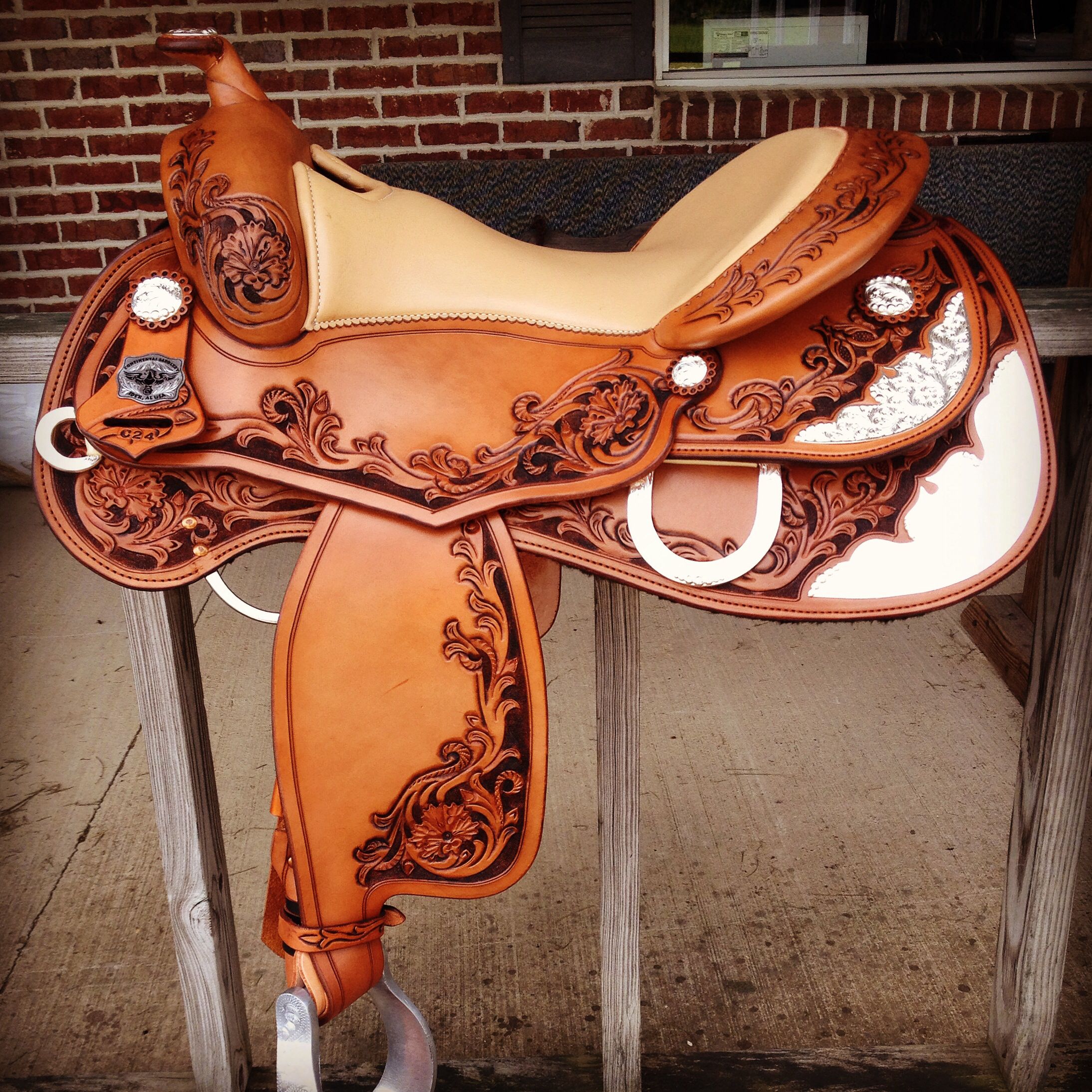
These are among the different types of saddles mainly used by cowboys.
They’re made of brown leather and may be customized with colorful Western-inspired patterns and colors.
The saddle has a horn at the front, which helps keep the rider stable while the other hand is holding the reins.
Elegant and durable saddles are ideal for ranch workers who spend much time on horseback and frequently perform rapid turns.
Around ten types of Western saddles are currently available, each specifically designed for a certain sort of Western riding.
7. Roping Saddle
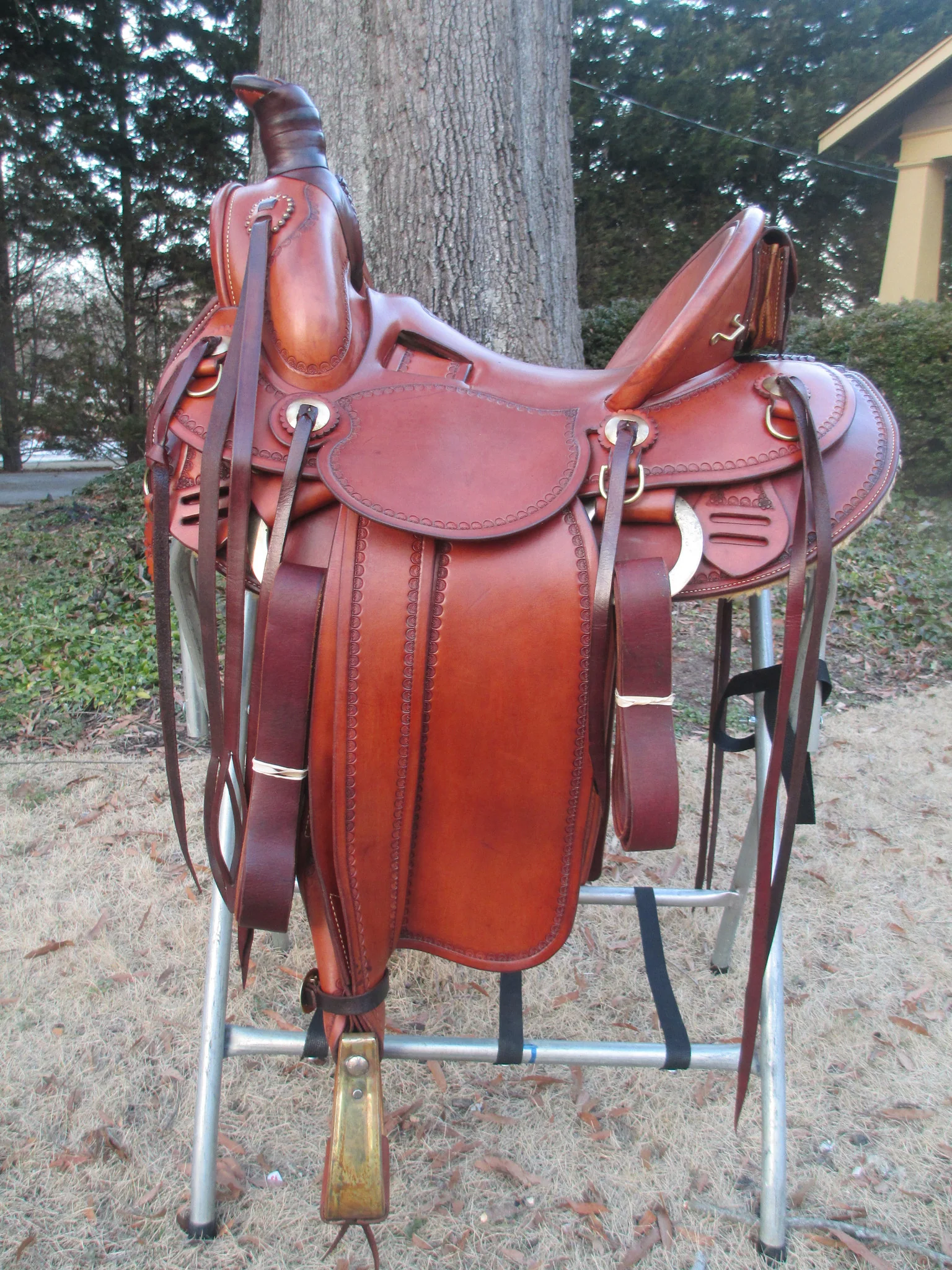
These saddles are normally built on robust trees with reinforced rigging.
For simple dismounting, roping saddles include a lower cantle and a pocket seat.
Their horns are also thicker, which they use to dawdle on. The skirts of these saddles tend to be longer or have a second skirt.
They do tend to weigh a lot. However, these saddles allow riders to move about freely rather than restricting movement when roping.
The deep stirrups on these different saddles allow the rider to brace against them and make them extremely robust.
8. All Around Saddle
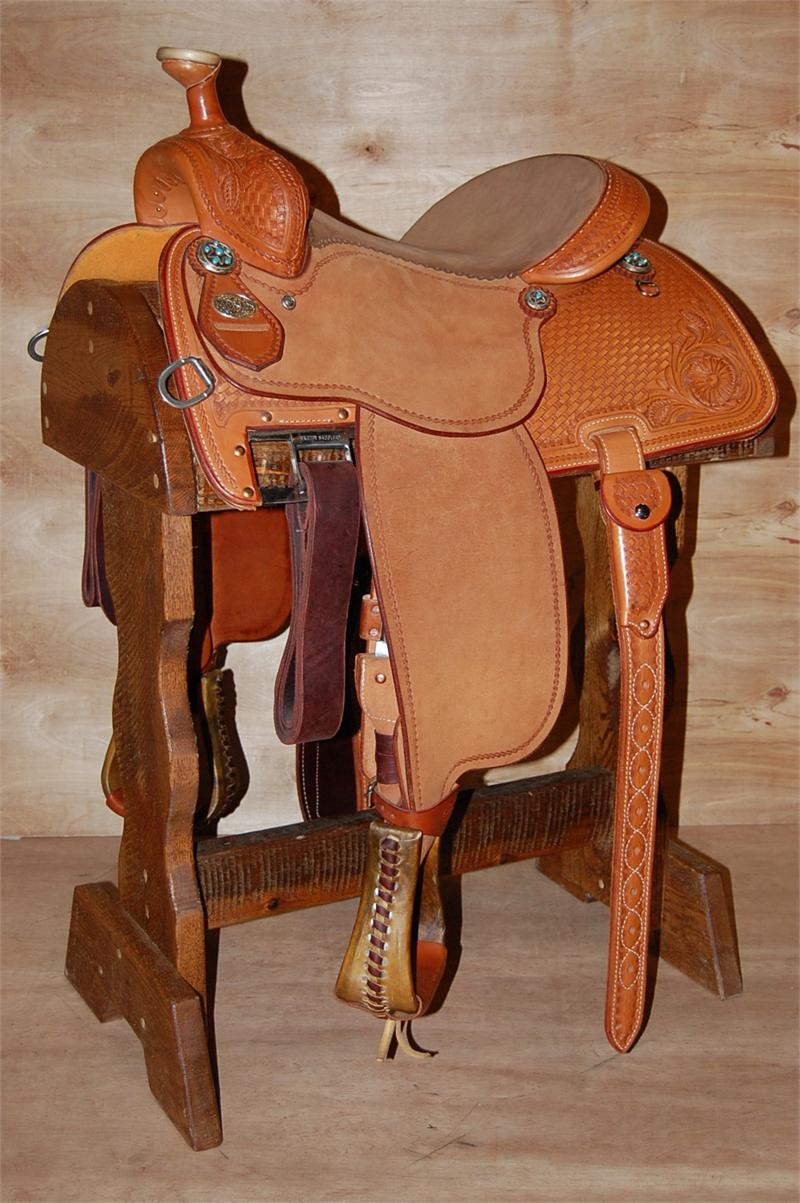
All-around saddles are exactly what they claim to be. Their versatility makes them one of the most useful saddles on the market, and they are built to handle anything.
An all-around saddle is great for ranching, roping, barrel racing, and trail riding. It can do it all.
The horns on these saddles are thick and sturdy, allowing you to pull a rope or even a whole cow behind you.
Additionally, it has a robust tree that can withstand the strain of roping. The skirt’s intimate touch with the body makes leg cues easier.
They also tend to have a flat seat but a well-placed pocket to keep you in place when racing.
The rigging is usually strengthened to withstand the load’s weight while being dragged or roped.
While the horn is higher, it is thicker due to the roping consideration. This is a good option if you plan on doing a lot on your horse.
9. Cutting Saddle
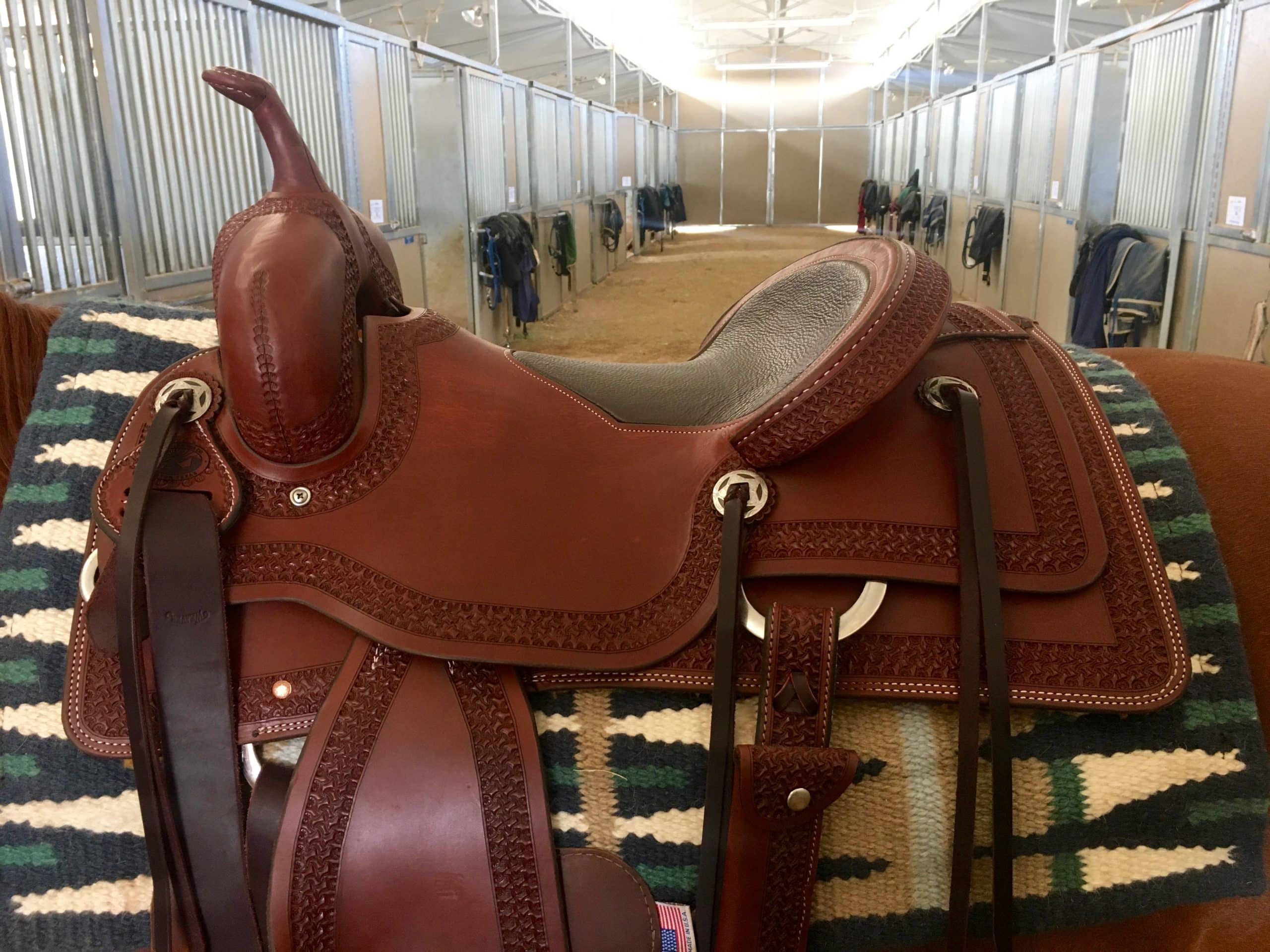
A cutting saddle’s main function is to keep the rider balanced and out of the horse’s way.
These saddles give the rider much freedom of movement, allowing the horse to accomplish its task to the best of its ability.
The cantle is low, the pommel is high, and the horn is narrow and tall.
The pommel portion of the seat has a small elevation, while the rest is level. The skirts of cutting saddles are usually longer and square.
They’ve even been known to wear two skirts at once. The long, thin horn helps the rider keep their balance and provides a solid grip.
The low cantle prevents the seat from biting into the rider’s back, while the flat seat provides maximum movement to the rider.
A cutting saddle can benefit team penning, sorting, and cutting contests. A cutting saddle is impossible to get out of using a rope.
10. Treeless Saddle
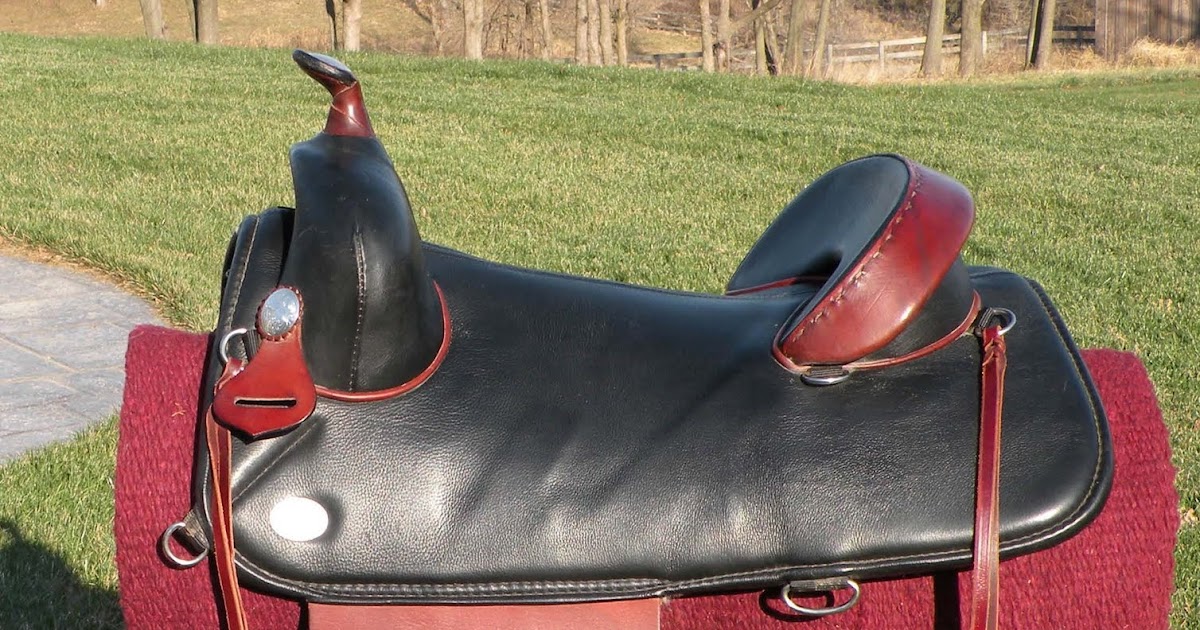
Treeless saddles exist between bareback and full saddle riding. They’re mostly composed of leather and foam padding, with a lightweight fiberglass pommel and cantle.
Although these saddles are less secure than general-purpose saddles, they provide a closer relationship with the horse and more flexibility in movement.
A treeless saddle might benefit horses with backs that are difficult to fit saddles and riders who are uncomfortable in a full saddle.
Riders with lighter saddles should wear a breastplate because they may not be as stable as heavier ones.
11. Trail or Pleasure Saddle

This is one of the different types of saddles that are designed to be as light as possible. Short, circular skirts are the most frequent design for them.
Trail saddles also have padded or gel seats for comfort. However, these saddles are unsuitable for roping or other strenuous ranch activities.
Depending on the situation, they may have a high cantle for safety or a low cantle for comfort.
Trail saddles come in a wide variety of styles and designs. Many include or allow the user to insert saddle strings easily to secure their trail riding gear.
Their horns are slimmer, and their pommel is shorter. They resemble barrel saddles in some aspects but are not nearly as tall.
12. Ranch Saddle
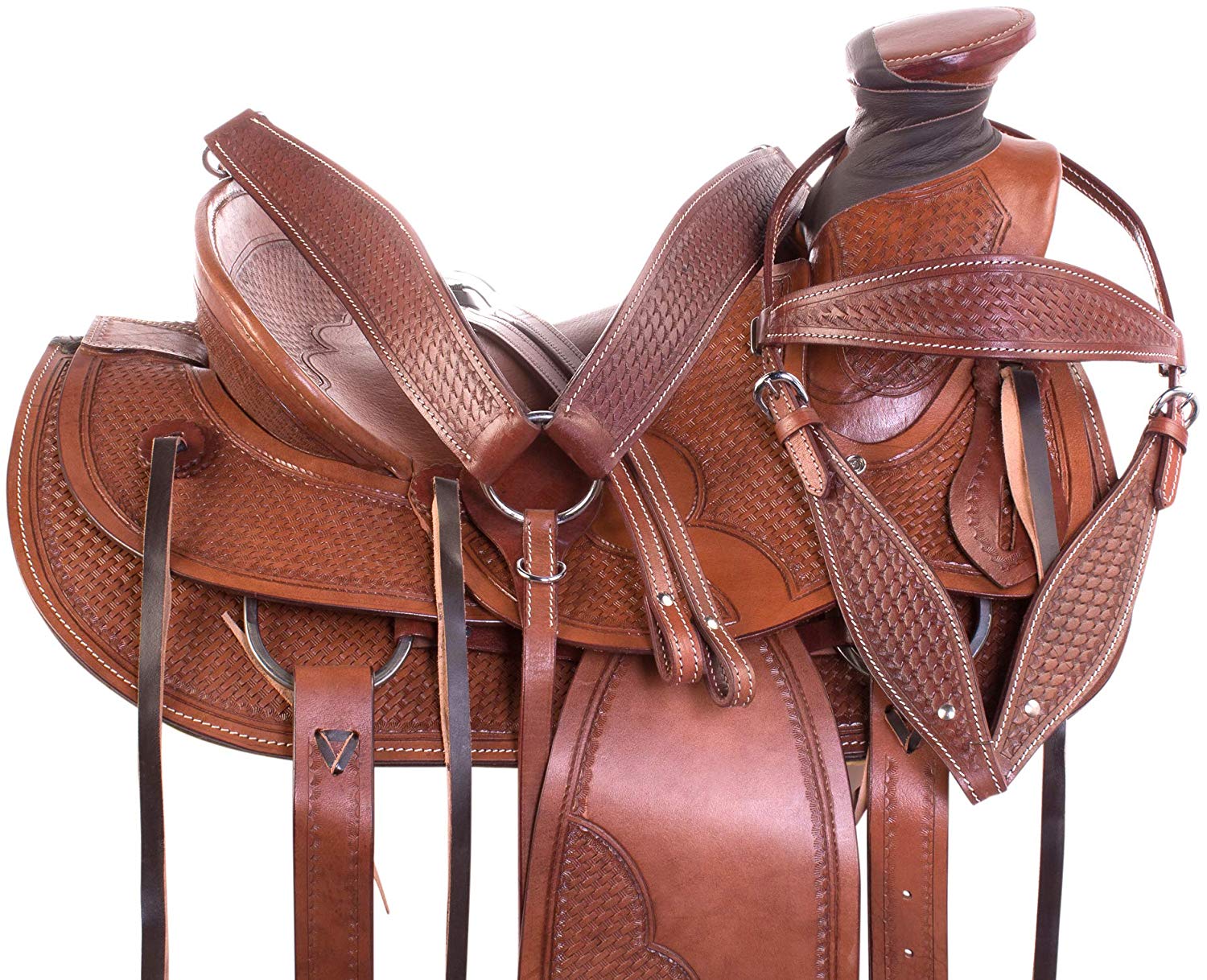
The ranch saddle, with a broad-wrapped horn and high cantle, has a deep seat and is substantial and durable.
This gear is meant to be used all day to keep the horse and rider safe and comfortable when handling cattle.
Cutting and roping saddles weigh more than other saddles, making them the toughest and most lasting.
The rider’s legs may hang straight down due to the location of the stirrups and fenders.
13. Youth Saddle

Because of their lightweight, these saddles are ideal for young riders on little ponies.
Small pieces of leather or plastic are used to make the synthetic materials used to make the garments.
Because of the smaller saddle’s design, children can sit more comfortably.
Some of these saddles have a grip on the front to help keep one’s balance.
This is a good alternative to the more expensive adult saddles, which suit various ponies.




